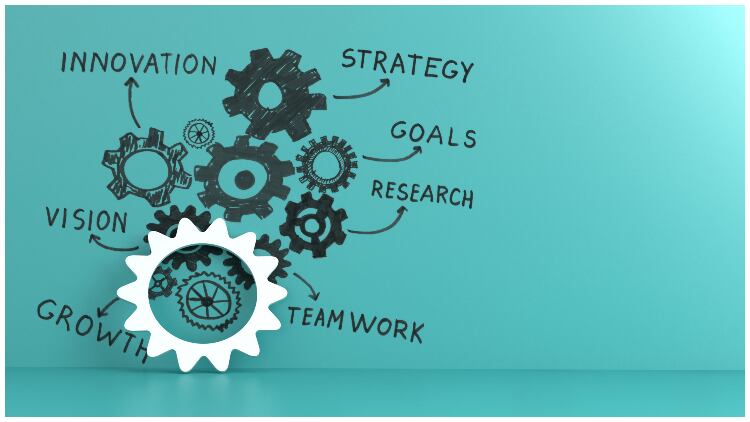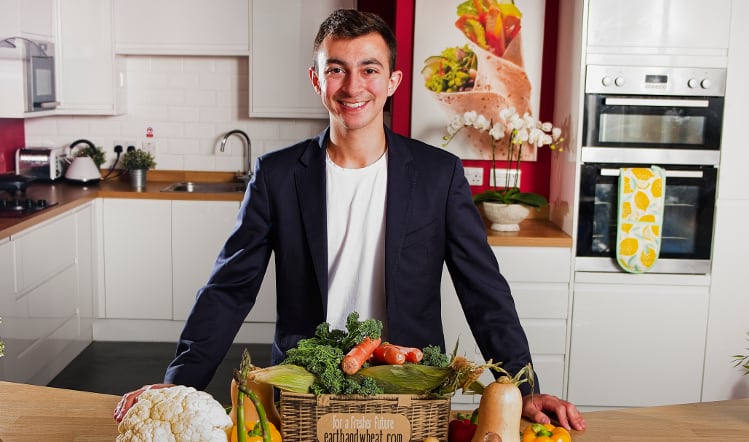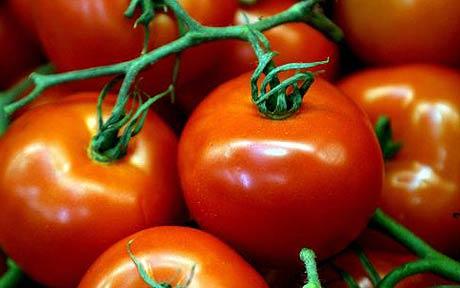Although our industry has done an incredible job of keeping the nation fed during turbulent times, it cannot be argued that there are chinks in our armour.
The last few years have revealed significant vulnerabilities in our supply chains, placing further pressure onto the food and drink sector.
The recent shortages of fresh fruit and vegetables we’ve witnessed in the UK is, in the words of the National Farmers Union (NFU), just the “tip of the iceberg”.
Data from the Food Foundation revealed worrying numbers of food insecurity among households in (September) 2022, with as many as 9.7 million adults and four million children experiencing insecurity.
So how can businesses help to integrate food security into their strategies?
What is food security?
First let’s examine what food security is.
When asked for his definition, the chief executive of food charity The Bread and Butter Thing Mark Game said that at its most basic level, it’s about having the ability and resource to feed yourself and your family healthily.
“That means three meals a day, with full diet diversity and being able to choose what you would like to eat,” Game noted. “It’s also about having access to a good range of food locally. Many of our members live in what we call ‘food deserts’, lacking access to good sources of affordable, quality food. Local infrastructure – such as buses – play a big role in this.”
Based on the 1996 World Food Summit, the World Food Bank extends this definition: “When all people, at all times, have physical and economic access to sufficient, safe and nutritious food”. Within this description, it divides food security into four main dimensions:
- Physical availability
- Economic and physical access
- Stability
- Food utilisation
Whilst the first three in the above list are self-explanatory, food utilisation may need further exploration.
“What is meant here is the ability of the body to make the best use of various nutrients in food, as well as having a diversity of the diet to enable to body to make the best use of the nutrients from the diet,” explained Bert Popping, co-founder of food safety consultancy FOCOS.
“Clearly, there is an interdependency between food security and food safety. If the food is not safe, food security is not relevant anymore, and if there is no food security, food safety is not relevant. So those two go hand-in-hand. But there is a third aspect that comes into play that is, in literature, often separated as ‘sustainability’.”
If one looks at the World Bank’s definition, one key component of sustainability – weather conditions – is referenced under stability.
“Sustainability certainly has numerous components, but one of these is stability over time,” Popping elaborated.
Climate change and food security
Climate change alone is not responsible for food insecurity, but it’s arguably one of the greatest challenges we face, not just as a nation but a world. As such, it should be key in a business’ future gameplan.
“Food and the climate are inextricably interlinked. Producing food requires land and resources, and creates emissions and waste – all of which drives climate change,” Kate Cawley, founder of the Future Food Movement said.
She pointed to not just the impact our food and drink system can have on the planet, but also the ‘boomerang effect’ in which changing weather conditions can have on our food systems.
There’s no food if there’s no soil
Among the effects severe weather can have on our food chains, harsh conditions can serve to ruin our soils – the key starting point for food.
A report from the European Environmental Agency (EEA) shows that soil moisture has markedly decreased in the Mediterranean region since the 1950s.
Soil moisture is an important part of crop growth. As the EEA website explains, it regulates soil temperatures, salinity, gives structure to the soil, contributes to the prevention of erosion, and helps with the availability of nutrients and the presence of toxins.

A fall in moisture means that more irrigation is required and that can lead to smaller yields and even desertification – where the soil becomes so damaged, it transforms into an infertile, desert-like state.
“The increase in quantity of food needed will challenge our agricultural food supply chains in multiple ways. Crop yield will need to increase as climate changes and the pressure for more bio-diverse approaches are having adverse impact on yield. There will also be pressure for increased use of agrochemicals to either fertilise or protect from pests, again driven by changing climate conditions,” FSQA consultant Neil Almond told Food Manufacture.
“Drought, flooding, temperature extremes…these climate events all affect the quantity and quality of food we can produce. It’s a vicious cycle that will only get worse as our population grows, but we can mitigate these risks by ensuring food is produced as sustainably as possible,” Cawley added.
Mycotoxins will rise
And as Popping expounded, these changes in climate will likely lead to an increase in mycotoxins: “It is predicted by many scientists that the level of mycotoxins will rise with climate change increasing temperatures. This favours especially mycotoxigenic fungi suited to higher temperatures, such as aflatoxin-producing Aspergillus species, which are known to be a health hazard not only to humans, but also to animals. The major crops affected by aflatoxins are staple foods like rice and maize, but also tree nuts, figs and other dried foods, spices, crude vegetable oils and cocoa beans.
“The jury is still out if we are likely to also see a rise in other mycotoxins due to climate change. Certainly, higher temperatures and humidity favour their growth – and we are already seeing unusual weather patterns that favour them.”
He continued: “It is important for business leaders to monitor their supply chains for increased mycotoxin presence. One mitigation measure is to have weather conditions in sourcing countries monitored.” This can be automated to a degree, with some risk forecast tools available, or raw materials can be monitored analytically. A mixture of both is likely to be the best way forwards.
The future workforce wants ESG high on the agenda
The Future Food Movement is on a mission to accelerate climate action in food through upskilling and collaboration, by not just helping to equip organisations with the know-how and tools, but also by feeding in the viewpoints of tomorrow’s workforce.
“A third of 13-24-year-olds say they’ve rejected a job based on a prospective employer’s ESG performance, so it’s critical that businesses put climate on their agenda so they can attract and retain the talent that will be key in driving climate action forward,” Cawley contended.
The cost of food and a move to localised food systems
Acknowledging the sustainability pressures being felt on operators, Almond predicts big changes for food systems: “Everything I see tells me that we will be thinking more regionally at a supply chain level but producing even more locally. This will be driven by the desire for provenance, the need to reduce emissions through transport and governments endeavouring to reduce the agglomeration of power and minimising risk through a much broader-based supply system.
Looking again at the recent fruit and veg shortages, which has caused purchasing limits to be placed on items such as tomatoes, peppers and cucumbers for Brits, official reports are pointing to bad harvests in areas such as Spain as the reasoning. However, there have also been anecdotal comments that suggest it’s a consequence of high energy and transport prices, whilst others say it’s Brexit red tape.
“At the moment, the cost of food is increasing and there are food shortages because retailers are refusing to pay the true price arguing that consumers won’t pay, but we don’t know that to be true,” Game contended. “So much power – arguably too much power – lies with the retailers. We believe that manufacturers should have more agency over the food they produce. We also need better transparency as many consumers would budget for food differently if they understood the true costs involved. We would press for a radical whole system reset and education.”
“Businesses small and large are fighting day to day to keep costs under control,” said Almond. “However, with greater stress being seen in the relationships with multiple retailers and the need to address sustainability concerns with relatively short-term measures, I am concerned that longer term thinking on security and sustainability solutions that will have the greatest impact is being delayed.
“In the UK, we seem to be lurching from one national crisis to the next – with two impacts. Firstly, we are risking gradual divergence from EU legislation one legislative vote at a time in Brussels. Secondly, we are delaying the development of a transparent national food strategy that will keep the UK food secure as we get to 2050.”
“In light of the 2023 fresh tomato crisis, we have been told that our supply chains are too complex, experts have said our retailing strategy in the UK is to blame and we should re-think how we source foods so that it is more local,” added Wayne Martindale, an associate professor in food insights and sustainability for the University of Lincoln. “The issue here is there is no real strategy for local sourcing and no idea of how to supplement a lack of localised supply when demand cannot be met locally.”
“Trade deals will be critical to that [national food] strategy,” Almond continued. “However, the challenge with trade deals is that, too often, we see them viewed and reported as being a negotiation, something to win, whereas for us to deliver on the global challenges of the next 25 years we must approach all trade deals with a win-win mentality. Global harmonisation of food standards, especially in the areas of contaminants, could unlock benefits in both cost and availability to those who need it most.”
Employing food security into your business strategy
Finding a good laboratory partner
For Reading Scientific Services (RSSL) it’s about finding good support from your laboratory partner. With food safety a key aspect of security, a reliable lab able to test for contaminants and adulteration is vital. The latter comes into play as we see producers unable to source from their usual suppliers reaching out to new ones. But as commodities become scarcer, their value increases, and with it, fraudulent activity.
The degree of testing RSSL recommends does depend on the track record you have with the supplier and how much confidence you have in them.
“A risk-based approach can be used to decide on the amount of testing to carry out,” noted Robert Griffiths, RSSL’s Technical Specialist in Lipids.
“If you have less history with the supplier then more analytical testing would be recommended and you might want to analyse more quality parameters in the specification, including the composition and physical properties as well as tests for contaminants – e.g., allergens, heavy metals, etc.
“To confirm the ingredient is not adulterated or contaminated may require tests that are not typically found on a specification.
“In these situations, it is important to use a laboratory with a good understanding of the analytical parameters and what the results mean, and they can also help to assess the impact of an ingredient being out of specification.”
Giving further context on mycotoxins and the solutions which exist to alleviate the risk around this pressing concern, Popping informed Food Manufacture that there are several issues surrounding the conventional, lab-based monitoring of these toxins.
“It’s time consuming, costly and therefore the number of samples sent to the lab tend to be limited,” he explained. “The issue with testing locally is that mycotoxins tend to occur in ‘hot spots’, meaning they are present in high concentration in one part of the received incoming raw materials, and may be absent in others. Therefore, testing just one or two – typically small – samples will not provide a representative answer for the entire lot. And testing many samples locally (or in the lab) is very costly.
“The good news is that technology has moved on and several so-called ‘point-and-shoot’ devices have been successfully tested. They do not require trained staff, nor do they often require sample preparation. They measure typically within seconds and tend to be significantly more cost efficient than conventional tests.”
However, Popping added the following caveat: “It is still advisable though to confirm results from point-and-shoot devices from time-to-time by sending a portion of the same sample to the laboratory. Using a combination of foresight services and frequent on-site measurement (e.g., point-and-shoot) will significantly reduce the risk of processing raw material with high mycotoxin concentrations while keeping quality control costs at bay.”
But it’s not just about safety, changing ingredient suppliers – even if swapping fats for other fats – can alter the stability and quality of the end product.
“Some stability and shelf-life testing would be recommended to prevent costly product failures during it shelf life,” concluded Griffiths.
Reformulation is another tact producers can try when availability becomes sparse.
As RSSL’s technical specialist Carole Bingley explains: “Reformulation can help by reducing reliance on vulnerable ingredients or by removing these ingredients completely.”
She continued: “When ingredients are difficult to source, then alternative ingredients might need to be considered, but this requires a good understanding of the ingredient in the finished product. Sometimes this can be a straight substitution of ingredient, but in other situations it might involve reformulation. Understanding the functionality of the ingredient and how it behaves or performs in the finished product can accelerate the reformulation of products and analytical testing of the ingredients can aid in this understanding.”
Understanding sustainability is everyone’s job
Cawley believes basic climate literacy is a good starting point for any business, as she cited the low numbers of leaders able to competently discuss their Net Zero strategy.
“The connection between what an organisation does and how it impacts the planet – and the implications of that – is not always obvious. Have this conversation throughout the entire organisation – every job is a climate job now, sustainability can’t be siloed.
“Providing the foundations for climate knowledge not only shows employees that this is something that’s on your radar, but encourages them to start thinking about ways they can make a positive contribution to your climate activities. Getting everyone’s input is absolutely critical, as it’s often those ‘on the ground’ that have the best ideas and insights. Our research shows that employees are generally eager to learn and contribute, so leaders need to tap into that appetite.”
Exploring new ways of using surplus
Adding further to this, Game said: “It’s inevitable that there will be more food shortages and inflationary increases in the price of food. That’s going to bring challenges around the quality of calorie that people can afford to buy and the rise in ultra-processed food – using cheap ingredients – which will have a direct impact on people’s health. This will entrench our two-tier food system: those that can afford to pay will be ok, but there will be increased pressure for those on lower incomes.

“The only way to prepare for this is to explore new ways of working and take direct action. For example, two million tonnes of crops are currently ploughed back in or left to rot. This should be harvested and used to feed people. Manufacturers should also explore ways to use their production line surpluses where WRAP suggest 200,000 tonnes of edible surplus is wasted. For example, we are working with Oscar Mayer to redistribute its line-end ready-meal ingredients.”
On the support offered to industry, Cawley believes government has a major role to play, but reasons that action will need to be sector-driven.
“It missed an extremely valuable opportunity for change when it watered down Henry Dimbleby’s National Food Strategy. Nonetheless, ‘first mover’ anxiety is a real barrier to progress in our industry, so regulatory change will act as important guard rails in kicking the industry into gear,” she argued.
“However, we have to take the lead on this. We can’t just sit around waiting for regulation to happen – we have to make it happen! By working together to demonstrate strong leadership and an appetite for collaboration, we can help to grease the wheels of regulation and get things moving.”
Data – and understanding it
Technology is often touted as the solution – at least in part – to a lot of these issues linked to food security, whether it’s identifying how yields are affected, how much or where waste occurs in your supply chain, or even within your lab results. However, understanding the data, let alone what to do with it, as a business can be challenging.
“Using food system intelligence is the call to action here. Manufacturers have access to more data than ever before, but we are getting to an ‘Eroom’s Law’ situation,” Martindale said. In essence, this is the idea that the more data we have, the less we can make sense of it.
To stop this from happening, Martindale says it’s about asking the right questions. He pointed to a project he is currently undertaking, in which he is monitoring UK wheat growth in real-time to project harvest levels. “We integrate these projections with market strategy and planning for security.”
Whatever route you take within your business strategy, the important thing to bear in mind is that food security is in everyone’s interests.





